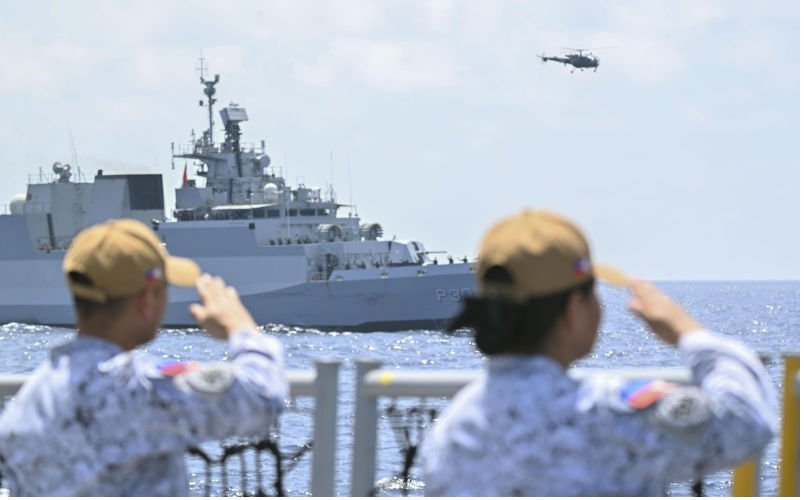Scarborough collision triggers Beijing’s strategic hardening
September 30, 2025
On 11 August 2025, Chinese law enforcement and naval vessels reportedly collided during an interception of a Philippine coast guard ship near Scarborough Shoal.
The incident occurred amid heightened regional tension — China-Philippines maritime disputes have become routine while countries like the US and India have expanded their presence in the contested waters.
The accident reshaped Beijing’s risk perceptions and prompted a reassessment of its policy options. Beijing now sees the South China Sea as more than a domain of law enforcement skirmishes. It has become a frontline where sovereignty disputes intersect with concerns regarding Taiwan and great power rivalry.
China’s official response was sharper than in previous encounters. The Ministry of Foreign Affairs warned Manila to “ cease provocations” and not to underestimate China’s resolve. Chinese media and analysts acknowledged the incident’s sensitivity without dwelling on operational details, instead emphasising broader risks.
Analysts close to the government suggested that dangerous manoeuvres by Philippine ships could be treated as acts of conflict requiring escalated countermeasures. Beijing’s deployment of a Type 052D destroyer during the incident marked a shift from a coast guard-led response to the use of high-value naval assets, signalling a willingness to accept higher operational risks to defend what it sees as core interests.
This new assertiveness coincided with Philippine President Ferdinand Marcos Jr’s remarks that the Philippines could not avoid involvement in any Taiwan conflict. For Beijing, South China Sea frictions and Taiwan challenges are increasingly intertwined. Marcos’ comments were interpreted as Manila aligning with US deterrence strategies and challenging the "One China" principle. The Scarborough Shoal clash was thus understood in China not only as a maritime confrontation but also as part of a broader strategic encirclement, elevating its political and security salience.
External powers reinforced this perception. The US conducted a freedom of navigation operation near Scarborough Shoal soon after the incident, eliciting strong protest from Beijing. India conducted joint sail and naval drills with the Philippines just days before the collision. For Beijing, these actions reinforced a sense of strategic tightening. Manila’s efforts to internationalise the dispute and Washington’s military operations and alliance support deepened perceptions of external powers encircling China.
China’s shifting risk perception is driving a turn towards combat readiness. Beijing is accelerating military preparations in the South China Sea, anchored in new People’s Liberation Army regulations that came into force in April 2025, enshrining “preparing for war” as the central theme. These direct the PLA to align training, deployment and command systems with real combat requirements.
In April 2025, the Shandong carrier strike group conducted exercises 200 nautical miles east of Luzon, directly transiting through the Philippines’ exclusive economic zone to demonstrate control. The PLA Southern Theatre Command has also expanded routine patrols and refined early-warning systems to better manage potential incidents involving Philippine or US operations in contested waters. Larger-scale joint drills, more frequent carrier deployments and tighter integration of the navy, coast guard and militia underline Beijing’s determination to signal deterrence and strengthen escalation management.
Heightened threat perceptions are pushing Beijing to reassess contingency options at Scarborough Shoal, where it has long refrained from large-scale construction to avoid diplomatic costs. Prominent Chinese analysts have noted that China could pursue either direct military occupation or a model combining paramilitary presence with dual-use civilian facilities. While Beijing has emphasised restraint, it may see construction as the only viable countermeasure if US and Philippine activities, often described in Chinese analyses as “grey-zone” tactics, continue. Such a step would harden sovereignty claims, complicate US–Philippine planning and risk international backlash.
Confronted with deeper international involvement, Beijing is reinforcing its external alignments, including closer security coordination with Russia and intensified partnerships with ASEAN members. China is actively advancing minilateral security frameworks — including trilateral maritime exercises with Russia and Iran under the “ Security Belt 2025” banner — signalling its preference for flexible arrangements beyond traditional multilateral institutions. Such alignments provide diplomatic cover in multilateral forums and reduce perceptions of isolation.
Beijing is also leveraging Belt and Road investments, trade agreements and infrastructure to dissuade Southeast Asian states from aligning fully with Manila and Washington. This calibrated approach to external balancing aims to counter US-led coalitions and preserve strategic space for Beijing.
Yet Beijing recognises the need for diplomacy to avoid regional isolation. It will intensify crisis management talks with Manila to prevent escalation, particularly given the Philippines is set to chair ASEAN in 2026. Sustaining dialogue reduces friction and limits the risk of ASEAN platforms being used to force countries to take sides or escalate confrontation. Beijing will combine strategic pressure with incentives, using investment, trade and tourism flows to influence Philippine policy. This dual-track approach of deterrence and dialogue aims to manage crises and shape the regional balance ahead of a critical ASEAN chairmanship year.
The Scarborough Shoal collision demonstrated that China’s South China Sea strategy is shifting towards higher risk tolerance and closer integration with broader security concerns. The involvement of a naval destroyer signals a willingness to assume higher risks, but exposes China to criticism and heightened scrutiny. Yet Beijing is aware that unrestrained escalation could drive ASEAN neighbours further into Washington’s embrace.
Manila’s ASEAN chairmanship in 2026 will be a critical test – if Beijing can balance deterrence with dialogue, it may prevent regional platforms from consolidating against it. Failure to do so risks entrenching the South China Sea as a flashpoint in China-Philippine ties and the wider Asia Pacific order.
Republished from East Asia Forum, 27 September 2025
The views expressed in this article may or may not reflect those of Pearls and Irritations.
